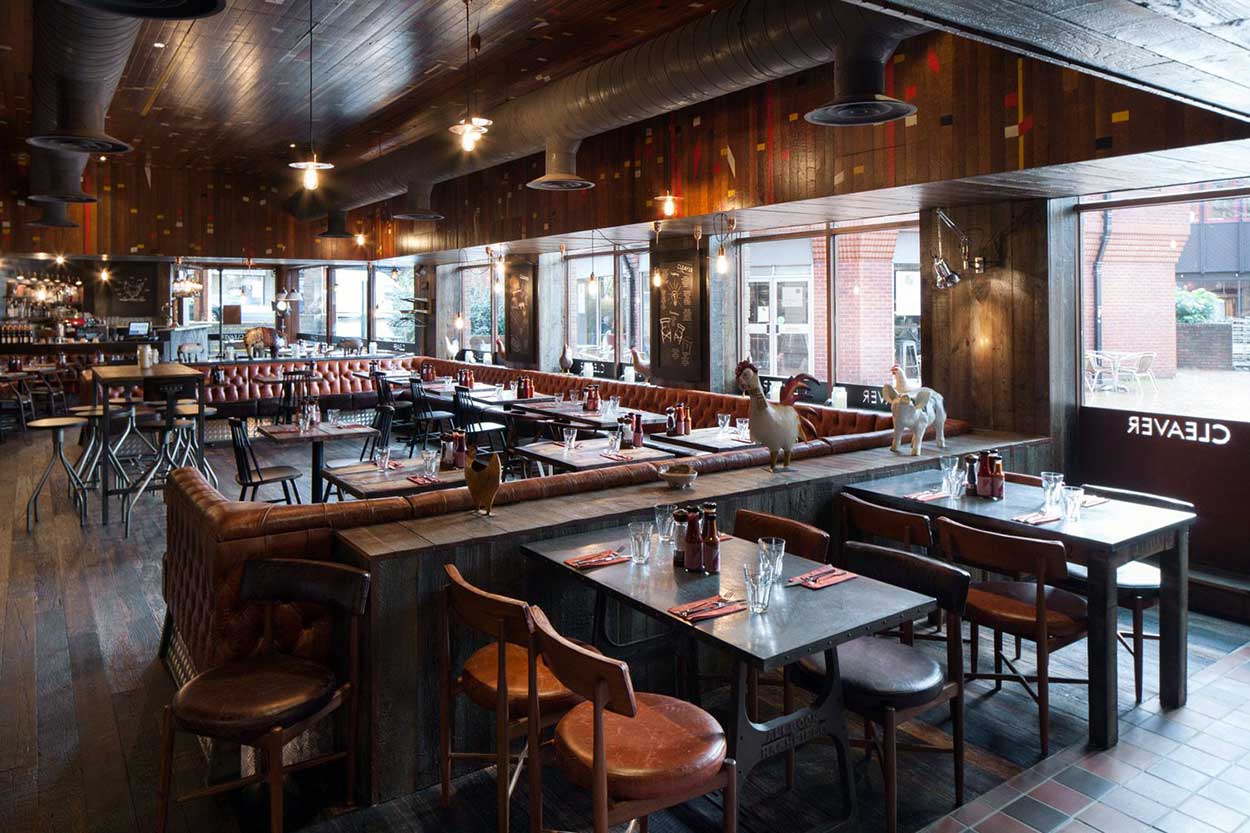In the ever-evolving world of restaurant design, creating a space that is both aesthetically pleasing and functional is paramount. Among the many materials available to designers and restaurateurs, reclaimed timber has emerged as a standout choice. Not only does it offer an unparalleled rustic charm, but it also aligns with contemporary values of sustainability and authenticity. Here’s why reclaimed timber is the go-to material for creating visually stunning and inviting restaurant interiors.
1. Unique Aesthetic Appeal
Reclaimed timber offers a unique, character-rich aesthetic that new materials simply can’t replicate. Each piece of wood has its own history, often marked by knots, nail holes, and variations in colour and texture that tell a story of its past life. This sense of history imbues a restaurant space with warmth and character, making it feel inviting and cosy. Unlike newly milled wood, which may look uniform and sterile, reclaimed timber brings a natural, lived-in look that resonates with the increasingly popular trend of creating spaces that feel authentic and grounded.
2. Sustainability and Eco-Friendliness
In an era where sustainability is not just a buzzword but a necessity, reclaimed timber is an environmentally responsible choice. By repurposing wood that might otherwise end up in a landfill, restaurants can reduce their environmental impact. This is particularly important in an industry that is often scrutinized for its ecological footprint. Using reclaimed timber helps conserve natural resources, reduces the demand for logging, and minimizes the carbon footprint associated with manufacturing new materials. For eco-conscious diners, knowing that a restaurant has taken steps to incorporate sustainable practices can enhance their dining experience and foster a deeper connection to the establishment.
3. Versatility in Design
Reclaimed timber is incredibly versatile and can be used in various design elements throughout a restaurant. Whether it’s for flooring, tabletops, wall panelling, or bar tops, reclaimed wood adds a distinctive touch that can complement a range of design styles—from rustic and industrial to modern and minimalist. Its natural tones and textures provide a neutral yet striking backdrop that pairs well with other materials such as metal, glass, and stone. This versatility allows designers to create spaces that are both cohesive and dynamic, offering a rich visual experience that keeps customers coming back.
4. Durability and Longevity
One of the most compelling reasons to use reclaimed timber is its durability. Having already withstood the test of time, this wood is often denser and harder than new lumber, making it ideal for high-traffic areas such as restaurant floors and tabletops. The natural ageing process that reclaimed wood has undergone often strengthens the material, making it more resistant to wear and tear. This longevity not only makes reclaimed timber a cost-effective option in the long run but also ensures that the restaurant maintains its aesthetic appeal for years to come.
5. Creating a Sense of Place
Reclaimed timber can help create a strong sense of place, an essential element in restaurant design. By using materials that have a history tied to the local area, restaurants can forge a deeper connection with their community. For instance, a restaurant in an old industrial town might use reclaimed wood from a nearby factory, thereby embedding a piece of local history into the very fabric of the dining experience. This not only adds layers of meaning to the space but also fosters a sense of pride and ownership among patrons who recognize the materials and their origins.
6. Enhanced Acoustics
Beyond its visual appeal, reclaimed timber can also improve the acoustic environment of a restaurant. Wood has natural sound-absorbing qualities that help reduce noise levels, creating a more pleasant dining experience. In a bustling restaurant where conversations, clattering dishes, and background music all compete for attention, good acoustics are crucial. Reclaimed timber’s dense, uneven surface can help diffuse sound, making the space feel more intimate and less chaotic.
7. Telling a Story
Every piece of reclaimed timber comes with a story—whether it’s from an old barn, a historic building, or a decommissioned ship. Incorporating these stories into the restaurant’s narrative can create a deeper emotional connection with customers. People are drawn to spaces that evoke emotions and memories, and reclaimed timber can do just that. By sharing the history behind the wood, restaurants can offer diners a unique experience that goes beyond the food, making each visit memorable.
Conclusion
Reclaimed timber is more than just a design trend; it is a timeless material that brings depth, warmth, and authenticity to restaurant interiors. Its aesthetic appeal, coupled with its environmental benefits and versatility, makes it an ideal choice for creating spaces that are both beautiful and meaningful. As the restaurant industry continues to evolve, reclaimed timber will undoubtedly remain a staple in design, helping to craft environments that not only look great but also tell a story worth sharing.
